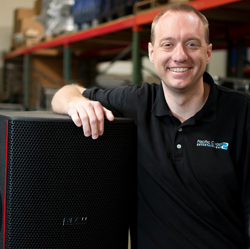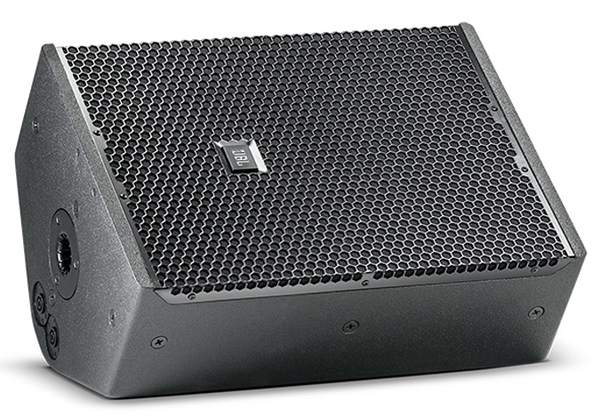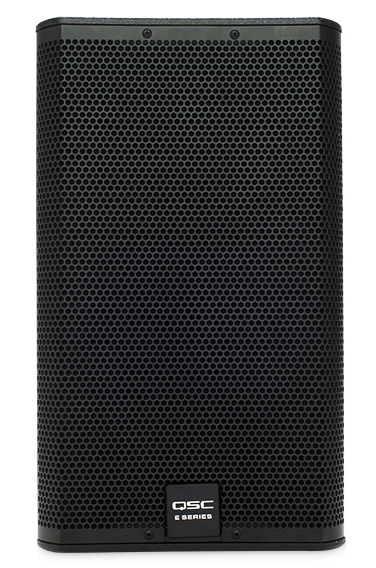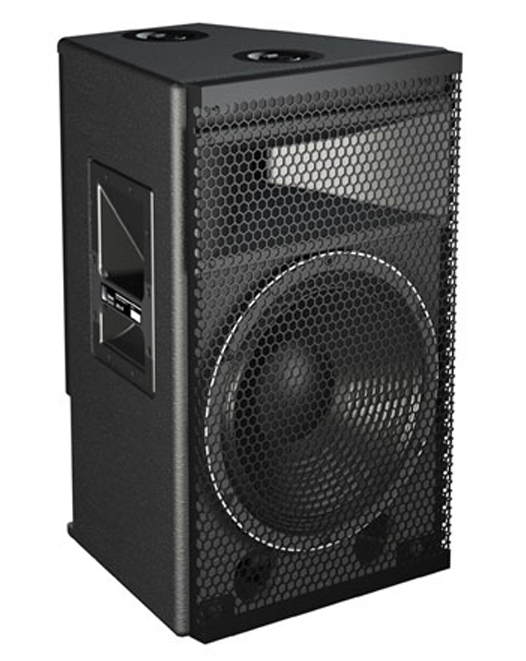
The X Series from L-Acoustics is comprised of three compact passive models joined by an active model, all equipped with coaxial drivers. Woofer options range from just 5 inches to 15 inches.
The three larger models all incorporate proprietary L-Vents (laminar vented ports) to reduce turbulence and port noise at high levels, increasing LF efficiency.
The passive enclosures are designed for use with the companies LA4X and LA8 amplified controllers, offering optimized DSP settings for each model.
LA Network Manager software provides real-time control and monitoring with multiple network topologies.
Model X12 (12-inch) has a 3-inch compression driver on an ellipsoid waveguide with 90- by 60-degree dispersion, while the cabinet offers both 35- and 55-degree monitor angles. Sub options include the SB15P/M (single-15) and SB18i/m (single-18).
The JBL Professional VTX F Series, a design collaboration with noted sound company Firehouse Productions (Red Hook, NY). It includes two 2-way cabinets (12- and 15-inch) utilizing the patented D2 Dual Diaphragm Dual Driver found in the VTX V25-II line array and M2 studio reference monitor. Both work with a proprietary Progressive Transition Waveguide that provides 90- by 50-degree dispersion (h x v).
Also onboard is the proprietary dual voice coil, dual magnetic gap Differential Drive technology that’s key to all VTX Series models, reducing driver weight while enhancing frequency response and output, and lowering distortion. These biamplified loudspeakers are designed to work seamlessly with Crown ITechHD and VRack, BSS OmniDriveHD V5 processing and JBL HiQnet Performance Manager Control. The series also includes the F18S (single-18) companion sub, also with Differential Drive.
QSC recently rolled out the new E Series, consisting of three passive 2-way models (10-, 12- and 15-inch) that incorporate the company’s DMT (Directivity Matched Transition), designed to deliver uniform frequency response across the coverage area. Dispersion is 85 degrees conical (75 degrees for the E15), with peak power ratings ranging from 1,200 to 2,000 watts, depending on model.
When used as part of a E Series Entertainment System – with the company’s PLD and GXD amplifiers and TouchMix digital mixers – the loudspeakers take advantage of advanced DSP settings in these latest generation products for a higher level of performance. A dual-angle 35 mm socket provides mounting on a pole and can be angled down by 10 degrees. The E18SW (single-18) serves as the companion sub.
The revitalized Point Series from Adamson Systems includes three 2-way loudspeakers (8-, 12- and 15-inch). All are available in passive or bi-amplified versions. They employ the same large-diaphragm compression drivers found throughout the company’s touring product range, and the 12-inch and 15-inch models also incorporate proprietary Advanced Cone Architecture in the LF transducers.
Both larger versions offer a choice of 60- by 40-degree or 40- by 20-degree dispersion. The smallest model provides 90- by 60-degree dispersion, and the waveguides are rotatable in all versions. A recessed rear panel features a pair of 45-degree angle NL-4 speakON connectors that allow mounting in tight spaces. Companion sub options include the Point 115-Sub (single-15) and 215-Sub (dual-15).
Meyer Sound has long been noted for its compact point source designs, with a deep line exemplified by the UPA-1P, a self-powered 2-way model in a vented enclosure. It incorporates a 12-inch cone woofer and 3-inch-diaphragm compression driver coupled with a proprietary 100- by 40-degree (h x v) vertical constant-Q horn. (The UPA-2P provides 45-degree symmetrical dispersion.) Phase-corrected electronics contribute to a flat acoustical amplitude and enhances phase response.
The UPA-1P is bi-amplified, driven by a proprietary 2-channel, class AB/bridged amplifier that also provides driver protection circuitry. And, it’s compatible with the Meyer RMS remote monitoring system that provides monitoring of system parameters on a Windows-based network. The UMS-1XP (dual-10) is the sub in the series but the company offers several other options.



